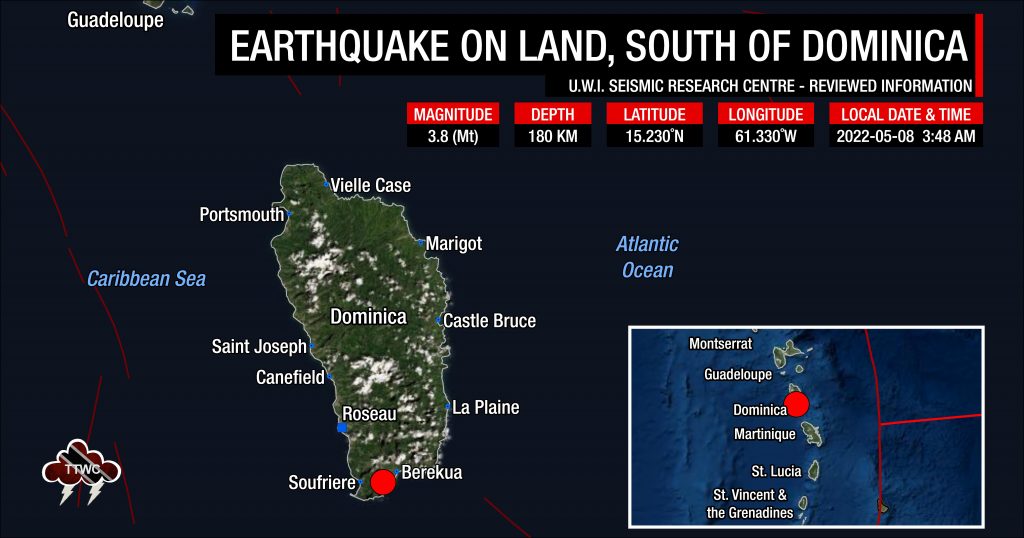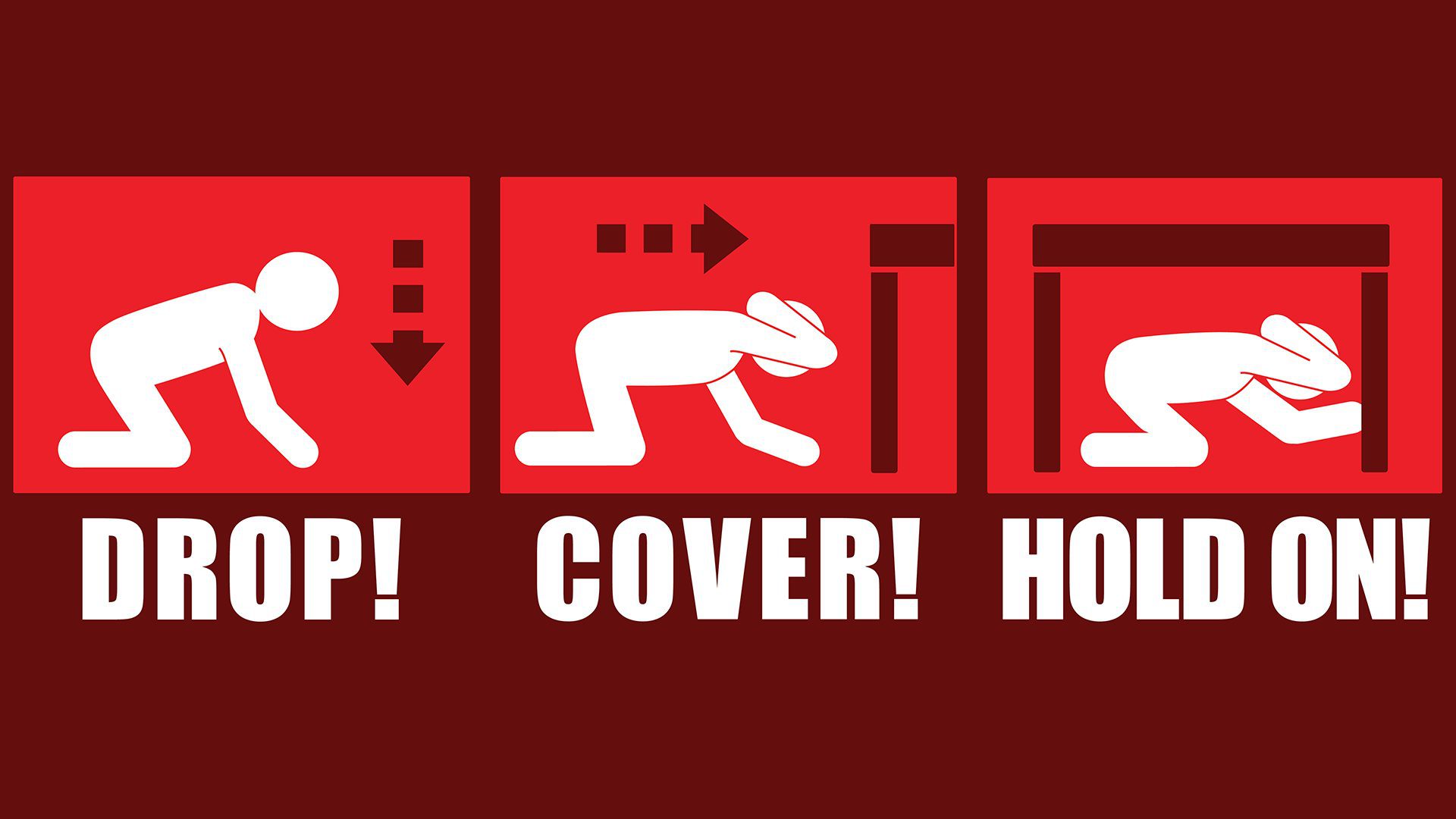At 3:48 AM, Sunday, May 8th, 2022, a minor magnitude 3.8 (Mt) earthquake occurred approximately 3.34 kilometers east of Soufriere, 2.6 kilometers southwest of Berekua (or Grand Bay), and 10.1 kilometers southeast of Roseau, Dominica. This event was located at 15.23°N and 61.33°W at a depth of 180 kilometers.

This information has been reviewed by the University of the West Indies Seismic Research Centre (UWI SRC), the authority for seismic and volcanological information in the English-speaking Eastern Caribbean.
This event was not reported felt. You can submit felt reports to the University of the West Indies Seismic Research Centre.
There is no tsunami threat.
There are four conditions necessary for an earthquake to cause a tsunami:
- The earthquake must occur beneath the ocean or cause material to slide within or into the ocean.
- The earthquake must be strong, at least magnitude 6.5.
- The earthquake must rupture the Earth’s surface and it must occur at a shallow depth – less than 70 KM below the surface of the Earth.
- The earthquake must cause vertical movement of the seafloor (up to several meters).
None of these conditions occurred.
Note that across the globe, different seismic monitoring agencies use different methods, or several methods, for processing quake parameters. Each method has its limitations and will likely produce different results within the range of the uncertainty of that data. This is generally accepted within the scientific community.
Read More
Earthquake Magnitude & Intensity
Can earthquakes be predicted or forecasted?
Seismicity in this area is fairly common, with 413 events recorded within 10 kilometers of the epicenter of this quake since modern records began. The largest quake within 10 kilometers of Sunday morning’s event occurred on September 24th, 1996, at a magnitude of 6.0. Generally, earthquakes are recorded between 0-25 kilometers depth in this area, but quakes have been recorded as deep as 200 kilometers, mainly for larger magnitude events.
Quakes in this particular area are due to a number of normal faults within the overriding Caribbean Plate, flexing as the North American plate subducts. The subducting slab has been modeled in this particular location to be near a 96.6-kilometer depth with a ±25.17 kilometer uncertainty and is nearly 105 kilometers thick.
Earthquakes *cannot* be predicted – meaning the precise time, date, magnitude, depth, etc., cannot be known ahead of time based on current research and technology.
However, the UWI SRC has said regional seismic and volcanic activity has been elevated for several years in their annual report for 2020 to 2021.
On average, the Eastern Caribbean has seen a pattern of major (M7.0-M7.9) quakes every 20 to 30 years. That pattern has stayed true. The last major (M7.0-7.9) quake occurred north of Martinique in 2007.
Historical patterns indicate that great quakes (M8.0+) on the Richter Scale have occurred every century in the region. The probability of another event at that level is high since the last >M8.0 earthquake occurred in 1843. While it is impossible to say definitively when the next great quake would occur in the region, the time since the last one is now more than 170 years ago.
Now is the time to create or go over your earthquake preparedness plan and know what to do during, before, and after an earthquake.












